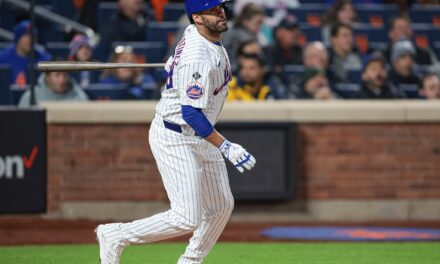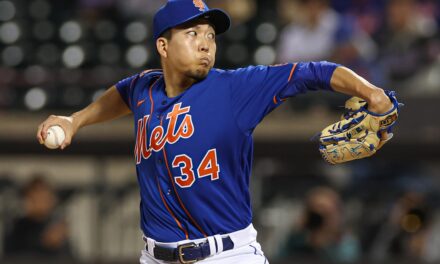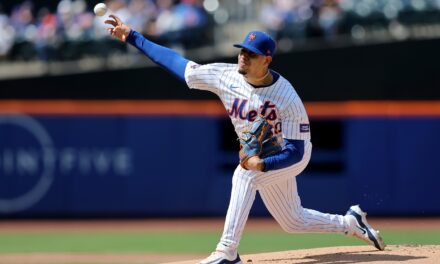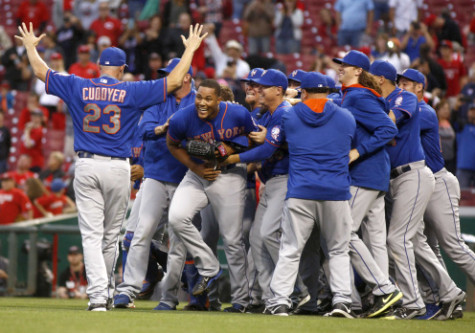
The Mets of the past few seasons have been characterized by the steps they’ve taken to improve according to a carefully orchestrated master plan. It’s been lurch and surge all the way, like driving with a bad clutch, and then suddenly around half way through the 2015 season it all seemed to kick into gear.
There were many among us, including our fearless GM Sandy Alderson, who predicted the Mets would come to prominence in 2014. Of course that didn’t happen, primarily due to injuries (Matt Harvey most notably) and some reclamation projects that fell through … but there were signs that the team was on the verge. Their second half record was respectable and their run differential was more like what you’d expect from a .500 team.
It’s always been about pitching. Early on in his tenure Paul DePodesta, cagily shared in one of his rare interviews that the Mets were actively accumulating a volume of pitching assets beyond what might be considered necessary to augment a major league roster.
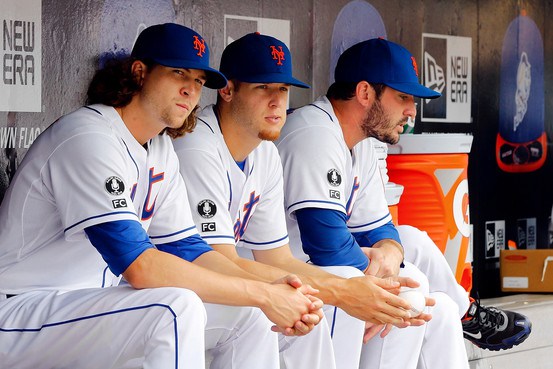
I have a hunch that initially they were targeting durability (big right handers with repeatable deliveries) as well, but when they determined (correctly I might add) that there was no true “durability profile” with physical specifications that they could effectively exact, they abandoned the approach for another: accumulate enough pitching to compensate for the inevitable attrition of arm and shoulder injuries.
As we speak the Mets feature 4 quality young arms who all in one way or another project as aces, with several other young arms on the way and Zack Wheeler returning from Tommy John surgery sometime next year. It is an embarrassment of riches but it didn’t happen by chance. The Mets neglected to focus on position players, unlike Theo Epstein of the Cubs who focussed almost exclusively on position players, and instead kept adding to an already sizable pitching corps.
The Mets obviously looked at what it takes to win both during the regular season and the post-season, and they appear to have built a team who did just enough during the regular season and who are, remarkably, taking October baseball by storm. It seems these Mets are built for the post-season with their wealth of power arms.

Joe Maddon of the Cubs keeps going on about how his team isn’t hitting like they can which seems rather obtuse — it’s not so much that the Cubs can’t hit like they’re capable of, it’s that they can’t hit Mets pitching.
It’s really about the Cubs (like the Dodgers before them) not being able to pitch with the Mets. It seems almost unfair that the Cubs face DeGrom and Matz in Games 3 and 4 after they burned through Lester and Arrieta in Games 1 and 2 without registering a win. Yet that was precisely the plan on the Mets side, converge a “critical mass” of high end pitching assets on the major league stage all at once and take it from there.
The “take it from there” portion of the plan came at the 2015 trade deadline. The Mets seemed poised to compete on several fronts, they had a mighty arsenal of power arms and a lock down closer, they also had some expendable pitching in the minors. Sandy Alderson settled once and for all the “pitching or position player” argument by transforming a struggling and inconsistent bottom third offense into one of the best in the league with a few careful additions.
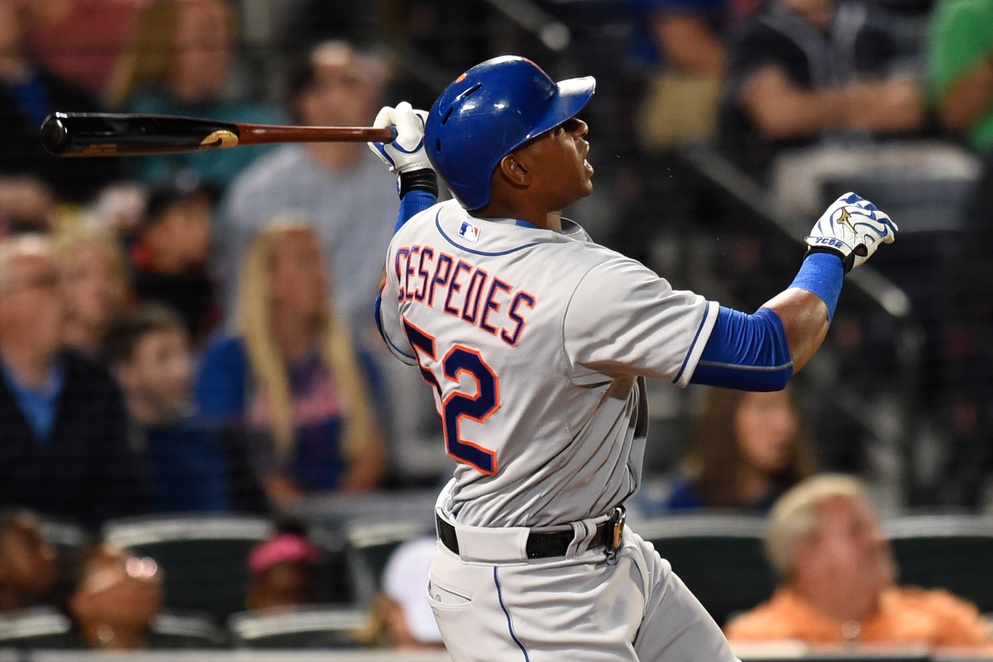
Now here’s the thing, it’s certainly conceivable for a team to add a Yoenis Cespedes, a Juan Uribe, and a Kelly Johnson to an offense through a few mid-season moves, but conversely, trying to build a team around position players with an eye on adding pitching through free agency and trades, leaves you at the mercy of the market.
Availability may dictate limited options, and you’d certainly be hard pressed to assemble a rotation of 4 ace level pitchers on the fly … It’s just not realistic, to do so for one would require an exorbitant number of prospects from the receiving team and there simply may not be that many quality pitchers available.
Also, you never know how guys will perform given new surroundings. You look at the Blue Jays for instance and their attempt to basically do the opposite of what the Mets did (accumulate position players and build a rotation on the fly) doesn’t seem to be faring that well.
There’s still some baseball left to play. The Mets could clinch tonight, or not, it remains to be seen. But however things turn out, you have to give credit to the Mets front office for developing a plan, a good plan, and sticking to it. The benefits, which may include a sustained run of teams built around quality pitching, are more than worth the wait.


